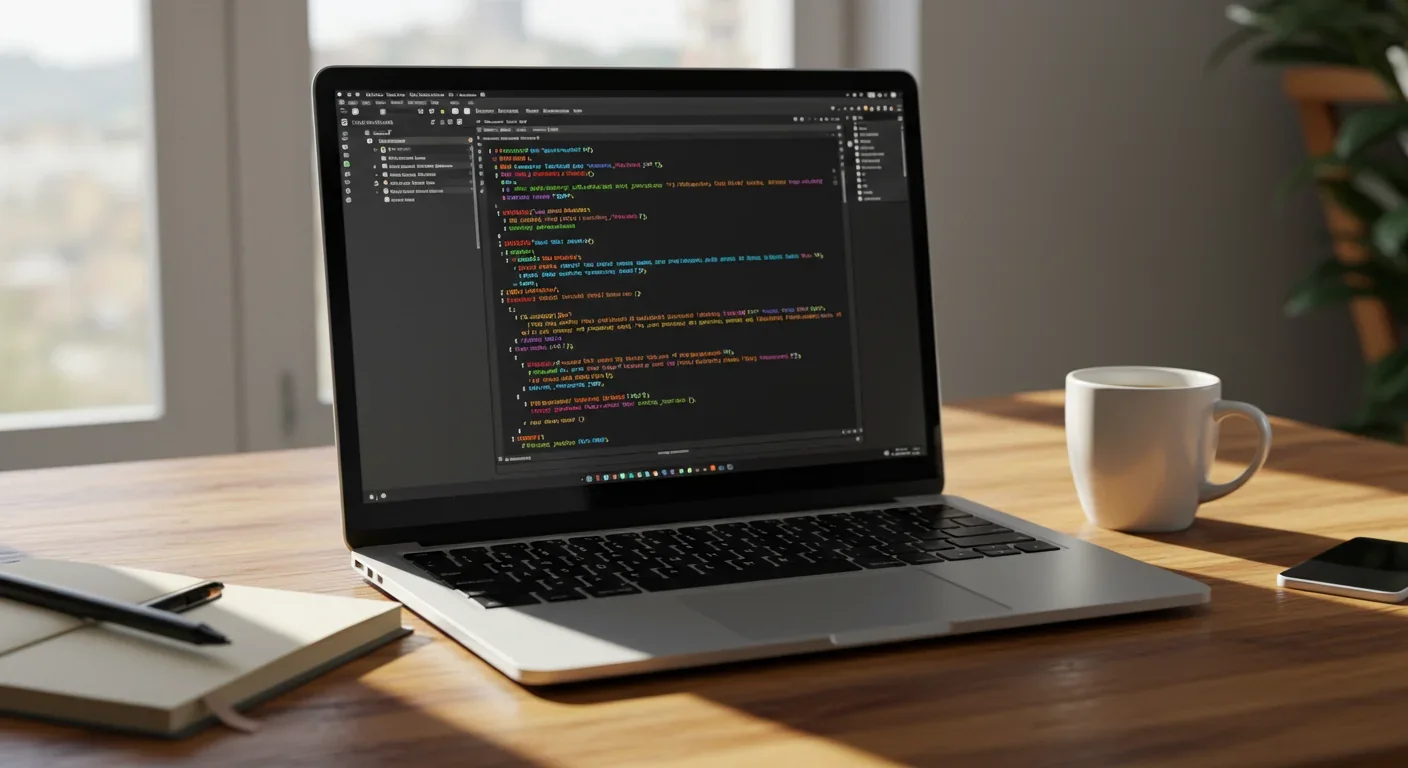Remote Work Surveillance Revives Taylorism's Ghost

TL;DR: Epistemic closure has fractured shared reality: algorithmic echo chambers and motivated reasoning trap us in separate information ecosystems where we can't agree on basic facts. This threatens democracy, public health coordination, and collective action on civilizational challenges. Solutions require platform accountability, media literacy, identity-bridging interventions, and cultural commitment to truth over tribalism.

We've reached a strange milestone in human history: two people can look at the same event and walk away with incompatible versions of what happened. Not just different interpretations—different facts. A pandemic that one person sees as a public health crisis, another views as government overreach. Climate data that scientists call alarming, others dismiss as manipulation. Democratic elections that half the country accepts, the other half contests.
This isn't just polarization. It's something deeper and more unsettling: epistemic closure, a state where individuals and groups become trapped in self-reinforcing information ecosystems that reject contradictory evidence before it can even register. We're not just disagreeing anymore—we're inhabiting separate realities, and the walls between them grow thicker every day.
The question keeping researchers awake at night: how did we get here, and can we find our way back?
Think about how you encountered information twenty years ago. A handful of TV networks. A daily newspaper. Water cooler conversations with coworkers who voted differently than you. The information landscape had guardrails—not because media was unbiased (it never has been), but because everyone swam in roughly the same stream.
Today's internet promised to democratize information. Instead, it created something nobody anticipated: algorithmically sorted realities where every person gets a customized version of the world calibrated to maximize engagement, not understanding.
The mechanism is deceptively simple. Social media platforms track what you click, what you linger on, what makes you react. Then they show you more of it. Confirmation bias—our natural tendency to favor information that supports existing beliefs—was always part of human psychology. But algorithmic amplification supercharged it, creating feedback loops that would make a 20th-century propagandist weep with envy.
A 2024 study analyzing 117 million posts across nine social media platforms found something remarkable: we've moved beyond echo chambers within platforms to entire "echo platforms"—sites where the baseline reality is ideologically homogeneous. Mainstream sites like Facebook still have ideological diversity (even if the algorithm sorts you into bubbles within them). But alternative platforms like Gab, Parler, and BitChute function as ideological monocultures where dissenting facts simply don't circulate.

Here's the uncomfortable part: epistemic closure doesn't just affect "them." It affects all of us, and being educated makes you better at it, not worse.
Research on motivated reasoning reveals why. When we encounter information that threatens our existing worldview, it doesn't trigger the brain's rational analysis centers. Instead, neuroimaging studies show activation in emotional regions—the amygdala and insula, not the prefrontal cortex. We're not thinking our way through conflicting evidence; we're feeling our way to conclusions that protect our identity.
Neuroimaging reveals that motivated reasoning activates emotional brain regions (amygdala, insula) rather than rational analysis centers. We're not thinking through conflicting evidence—we're feeling our way to identity-protective conclusions.
A classic Stanford study illustrated this perfectly. Researchers gave people with strong opinions on capital punishment two studies to review—one supporting it, one opposing it. Participants didn't converge toward the evidence. They diverged further, each side finding reasons to embrace the study supporting their view and dismiss the one challenging it. Exposure to the same facts made them more polarized, not less.
This process has a name: identity-protective cognition. When facts threaten group membership or self-concept, rejecting those facts becomes a form of social survival. It's not stupidity—it's the brain doing exactly what evolution designed it to do, prioritizing tribal belonging over abstract truth.
During the COVID-19 pandemic, researchers documented how motivated reasoning fueled both misinformation spread and resistance to public health measures. People weren't evaluating mask mandates or vaccine data scientifically; they were asking "what do people like me believe?" and reasoning backward from there.
The technology wouldn't work without willing participants, and the media ecosystem has evolved to serve our appetite for confirmation.
Gone are the days when three networks shaped consensus reality. Modern media fragmentation allows everyone to construct a bespoke information diet that validates their priors. Conservative viewers who find CNN too liberal can switch to Fox News. If Fox isn't conservative enough, there's Newsmax and OAN. Each step selects for narrower ideological range and stronger tribal affiliation.
The Canadian media landscape offers an interesting counterpoint. Despite having domestic partisan outlets, only 1% of Canadians visited them during tracking periods, while 15% consumed partisan media overall—mostly American sources like Fox and CNN. The data reveals something crucial: partisan media consumption is highly concentrated. Just 1% of users account for 79% of partisan media visits. Echo chambers aren't equally distributed; they're sustained by a small minority of heavy consumers who then amplify that content to broader networks.
"The three big broadcasters have almost 3 times (14 times) the traffic as the 14 right-wing (left-wing) partisan news sites identified here."
— Canadian Journal of Political Science
But here's what makes modern epistemic closure different from historical propaganda: it feels like freedom. Nobody's forcing you into an information silo. You're choosing it, click by click, and the algorithm is just giving you what you asked for. The bars of the cage are invisible because you built them yourself.

There's a philosophical wrinkle worth examining: consensus theory of truth, the idea that statements become true when people generally agree upon them.
Philosophers have long critiqued this as naive—general agreement doesn't make something factual. But epistemic closure takes that critique and weaponizes it: if consensus can be manufactured, then any consensus becomes suspect. This creates a bizarre inversion where widespread agreement becomes evidence of conspiracy rather than collective understanding.
Consider climate science, where 97% of climate scientists agree on human-caused warming. In a healthy information ecosystem, that overwhelming consensus signals reliable knowledge. But in epistemically closed communities, it becomes proof of groupthink, academic corruption, or global conspiracy. The consensus that should resolve uncertainty instead deepens it.
This dynamic paralyzes collective action on civilizational challenges. When basic facts become partisan—whether COVID is dangerous, whether elections are legitimate, whether temperatures are rising—society loses the capacity to mount coordinated responses. We can't solve problems we can't agree exist.
Democratic governance rests on a fragile assumption: that citizens share enough common reality to argue productively about what to do with it. You can disagree about policy while accepting the same facts. Higher taxes or lower? More regulation or less? These are legitimate debates.
But epistemic closure destroys that foundation. When we can't agree on what's true, democracy becomes tribal warfare where winning matters more than governing. Philosopher Michael Patrick Lynch argues that democracy demands truth—not perfect omniscient truth, but a shared commitment to distinguishing facts from preferences, evidence from assertion.
We're testing whether that commitment can survive the internet age. Early returns aren't promising.
Democracy demands truth—not perfect omniscient truth, but a shared commitment to distinguishing facts from preferences, evidence from assertion. Without common ground, governance becomes impossible.
The 2020 U.S. Presidential election offers a case study. Despite no evidence of widespread fraud, belief in a stolen election became republican orthodoxy within weeks. Not because new facts emerged, but because accepting the loss became socially costly within that coalition. Identity-protective cognition at scale.
The real damage isn't the false belief itself—democracies have weathered those before. It's the systematic erosion of shared arbiters of truth. Courts, election officials, intelligence agencies, independent media—all the institutions that previously grounded factual disputes now exist inside the partisan reality tunnel. If your tribe says they're compromised, their verdicts become just another contested claim.

Is any of this actually new? Humans have always formed ideological camps and believed comforting fictions. Medieval Europe spent centuries in religious consensus realities. Cold War superpowers maintained competing narratives about everything from economics to athletics.
The difference is speed, scale, and personalization. Historical propaganda required massive coordination—state media apparatus, censorship infrastructure, fear of punishment. Today's algorithmic systems are decentralized, voluntary, and invisible. You don't need a Ministry of Truth when everyone curates their own.
Moreover, previous eras maintained friction in the system. Even in deeply propagandized societies, people encountered contrary information through geography, family, happenstance. The Berlin Wall was literal—you knew when you were on the other side. Modern filter bubbles have no such markers. You can live your entire information life in one epistemic universe while physically standing next to someone in another, both scrolling on phones.
So can we fix this? Research suggests it's possible but not easy.
Algorithmic transparency is one approach: making people aware when they're being sorted into bubbles. Studies show that users who understand how recommendation systems work become more critical consumers, actively seeking diverse sources. The problem is that platforms have commercial incentives to keep users engaged, and cross-cutting content creates friction that drives people away.
Digital literacy initiatives offer another path. Teaching people to recognize motivated reasoning in themselves, to seek out steel-man versions of opposing arguments, to distinguish quality sources from partisan hackery. Finland implemented comprehensive media literacy in schools and now has among the highest resistance to online disinformation in Europe. But that's a generational project, not a quick fix.
"Identity-salience interventions can systematically reduce motivated reasoning within echo chambers, suggesting that framing messages around shared values has practical impact."
— Motivated Reasoning Research, 2023
The most promising research involves identity-salience interventions—framing messages around shared identities rather than divisive ones. When you remind people they're Americans (or parents, or sports fans) before reminding them they're conservatives or progressives, they evaluate information more evenly. One study found this technique systematically reduced motivated reasoning in echo chambers by appealing to superordinate group membership.
Some researchers advocate for consensus decision-making processes that require participants to genuinely engage with opposition before deciding. Used effectively in organizations from the Occupy movement to Quaker meetings, these approaches force epistemic bridge-building by making agreement the explicit goal rather than a nice-to-have.
None of these solutions work at internet scale yet. But they point toward a future where we design systems for shared understanding rather than maximal engagement.

Here's the uncomfortable truth: the technology exploits a bug in human cognitive architecture that isn't going away. We evolved in small tribes where conformity had survival value and information scarcity was the norm. Our brains are optimized for that world, not one where anyone can find supportive "evidence" for any belief within seconds.
Filter bubble research shows that algorithmic personalization interacts with human selective exposure—we choose our bubbles even as the algorithm reinforces them. Purely technological fixes miss that human element. We like information that confirms our beliefs. It feels good, socially and neurologically.
This means solutions require both platform redesign and cultural shifts. Platforms could prioritize accuracy over engagement, cross-cutting content over reinforcement, and friction over frictionlessness. But users would have to accept a less pleasurable information experience—seeking truth rather than validation.
Will we? The jury's out.
Walk through what we're losing as realities diverge.
Public health coordination collapses when people can't agree on whether diseases are real or vaccines work. COVID illustrated this brutally, with policies varying wildly based on which consensus reality governors inhabited.
Climate action stalls when half the country disputes the temperature records the other half finds alarming. You can't negotiate solutions to problems you don't collectively acknowledge.
Democratic legitimacy erodes when elections produce winners the losing side considers illegitimate. Peaceful transfer of power requires shared acceptance of outcomes, and that requires trusting the process measuring those outcomes.
Social trust—the glue holding pluralistic societies together—dissolves when you can't assume your neighbor shares your reality. Why compromise with people operating from "alternative facts"? Why listen to media everyone knows is biased? Why respect institutions everyone says are corrupt?
We're watching the experiment play out in real time: can technologically advanced democracy survive when consensus reality itself becomes partisan?
Rebuilding shared epistemic ground won't happen through individual choice alone. It requires structural changes to the information environment.
Platform accountability: Tech companies profit from engagement, including the enraging kind that deepens divides. Regulation forcing transparency about algorithmic curation would let users understand how they're being sorted. Better yet, design incentives for platforms to value accuracy over mere engagement.
Media ecosystem reform: The market rewards partisan media because audiences self-select for it. What if we invested in genuinely nonpartisan infrastructure—news organizations with structural independence from both corporate and political pressures? Public broadcasters like the BBC and CBC offer models, though maintaining their neutrality is constant work.
Epistemic humility: This is the hard part—cultivating willingness to be wrong. Lynch calls it "truth-infused pragmatism", balancing conviction with openness. Not relativism ("everyone's truth is valid") but fallibilism ("I could be mistaken, let's examine evidence together"). That requires intellectual virtue that social media actively punishes.
Bridge-building institutions: We need spaces—physical and digital—where people from different realities are forced to engage constructively. National service programs, community dialogues, diversified college campuses. Anywhere friction between worldviews can't be algorithmically eliminated.
There's no silver bullet here, no app update that restores consensus reality. We face a collective action problem where individual rationality (choosing comfortable information) produces collective irrationality (inability to govern together).
Breaking epistemic closure requires uncomfortable work. Seeking out quality sources that challenge you. Building relationships across political divides. Distinguishing between "this person disagrees with me" and "this person denies reality." Recognizing motivated reasoning in yourself, not just your opponents.
Breaking epistemic closure requires uncomfortable work: seeking sources that challenge you, building relationships across divides, and recognizing motivated reasoning in yourself—not just your opponents.
It means demanding better from platforms and media companies, even when that makes your experience less pleasant. Valuing truth over tribalism, accuracy over affirmation. Supporting institutions that prioritize shared reality over partisan victory.
Most importantly, it requires remembering why common ground matters. Democracy isn't just voting—it's collective deliberation toward shared goals. That only works when we inhabit roughly the same reality, arguing about what to do with agreed-upon facts rather than which facts to accept.
The walls of our separate realities weren't built overnight, and they won't crumble easily. But understanding how they arose—algorithmic amplification meeting motivated reasoning meeting platform incentives meeting political polarization—gives us blueprints for dismantling them.
Because the alternative is a society where truth itself becomes just another partisan weapon, where every disagreement escalates into fundamental conflict, where governing together becomes impossible. We can't afford to let that become our permanent reality.
The first step is admitting we're trapped in epistemically closed bubbles. The second is choosing to break out, uncomfortable as that will be. The third is building institutions and incentives that make shared truth easier than comfortable fiction.
We've fractured reality. Now comes the harder work: putting it back together.

Curiosity rover detects mysterious methane spikes on Mars that vanish within hours, defying atmospheric models. Scientists debate whether the source is hidden microbial life or geological processes, while new research reveals UV-activated dust rapidly destroys the gas.

CMA is a selective cellular cleanup system that targets damaged proteins for degradation. As we age, CMA declines—leading to toxic protein accumulation and neurodegeneration. Scientists are developing therapies to restore CMA function and potentially prevent brain diseases.

Intercropping boosts farm yields by 20-50% by growing multiple crops together, using complementary resource use, nitrogen fixation, and pest suppression to build resilience against climate shocks while reducing costs.

Cryptomnesia—unconsciously reproducing ideas you've encountered before while believing them to be original—affects everyone from songwriters to academics. This article explores the neuroscience behind why our brains fail to flag recycled ideas and provides evidence-based strategies to protect your creative integrity.

Cuttlefish pass the marshmallow test by waiting up to 130 seconds for preferred food, demonstrating time perception and self-control with a radically different brain structure. This challenges assumptions about intelligence requiring vertebrate-type brains and suggests consciousness may be more widespread than previously thought.

Epistemic closure has fractured shared reality: algorithmic echo chambers and motivated reasoning trap us in separate information ecosystems where we can't agree on basic facts. This threatens democracy, public health coordination, and collective action on civilizational challenges. Solutions require platform accountability, media literacy, identity-bridging interventions, and cultural commitment to truth over tribalism.

Transformer architectures with self-attention mechanisms have completely replaced static word vectors like Word2Vec in NLP by generating contextual embeddings that adapt to word meaning based on surrounding context, enabling dramatic performance improvements across all language understanding tasks.